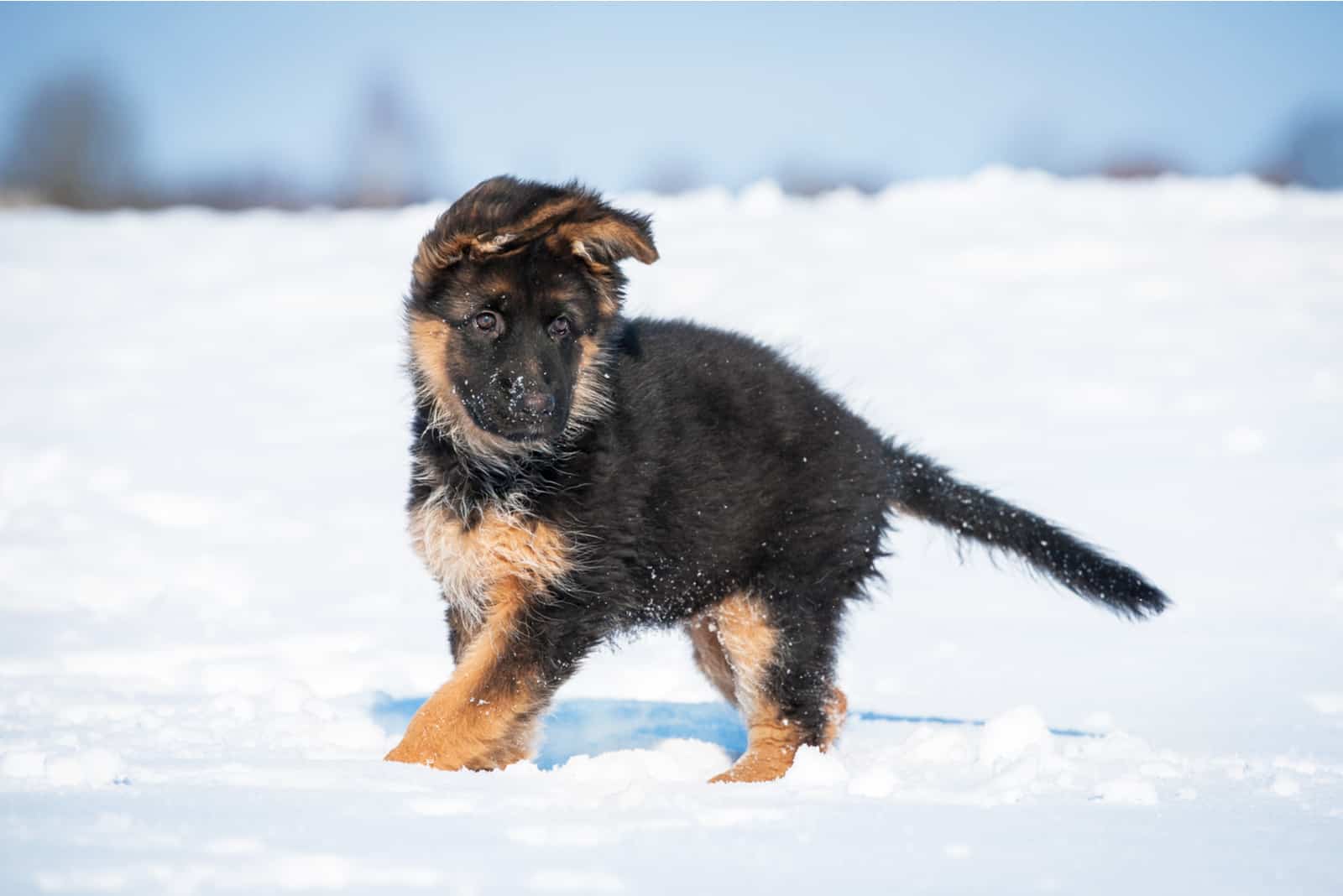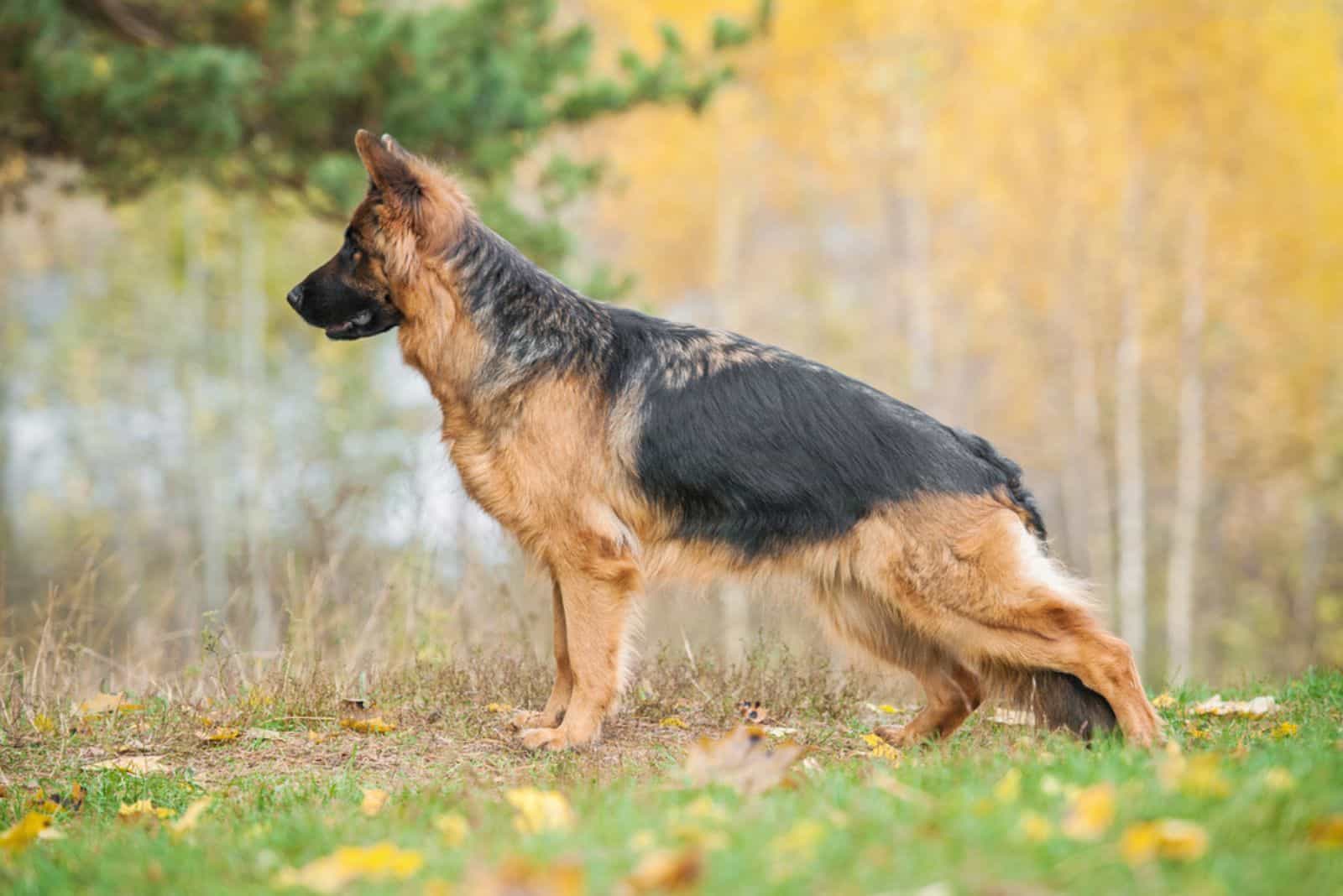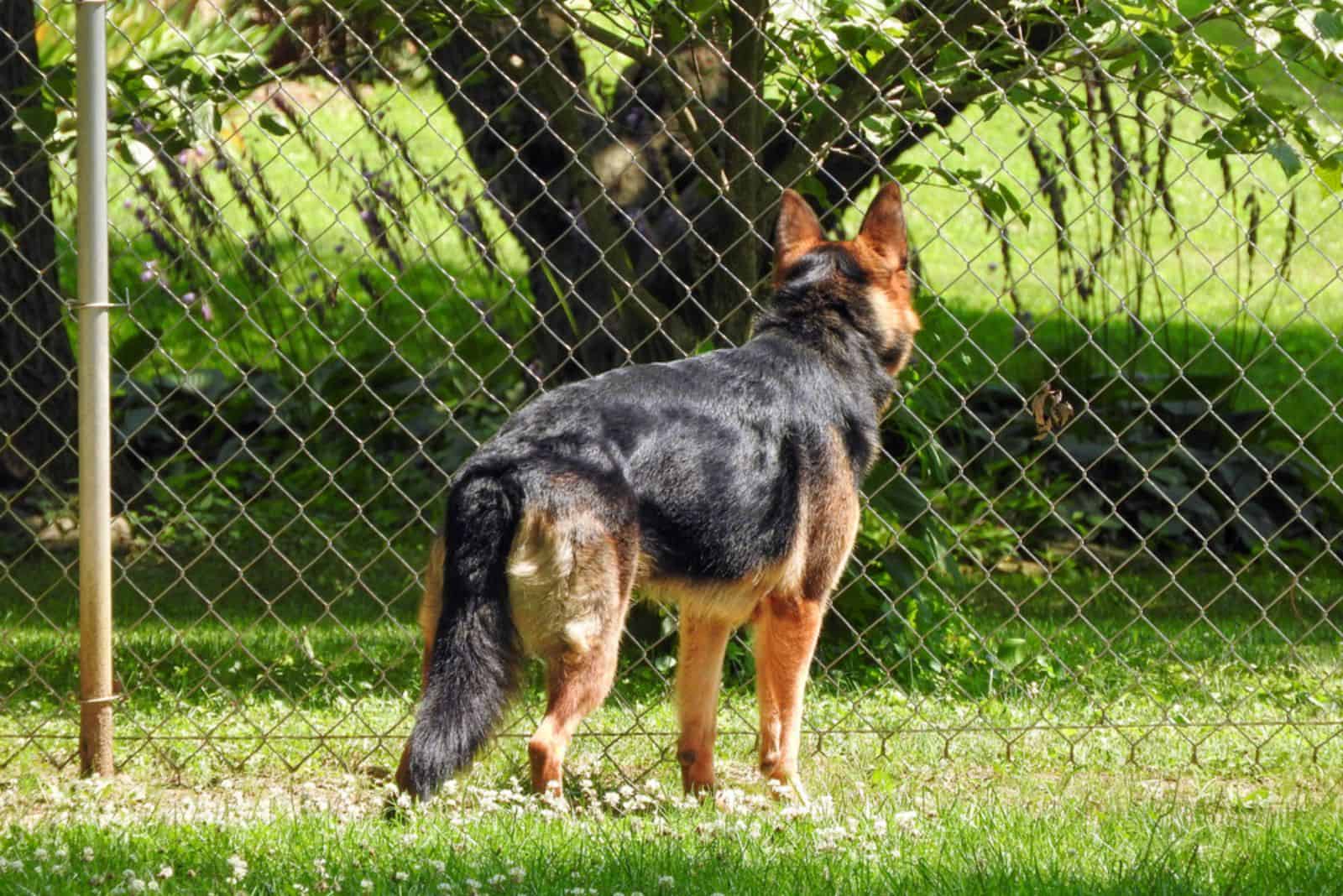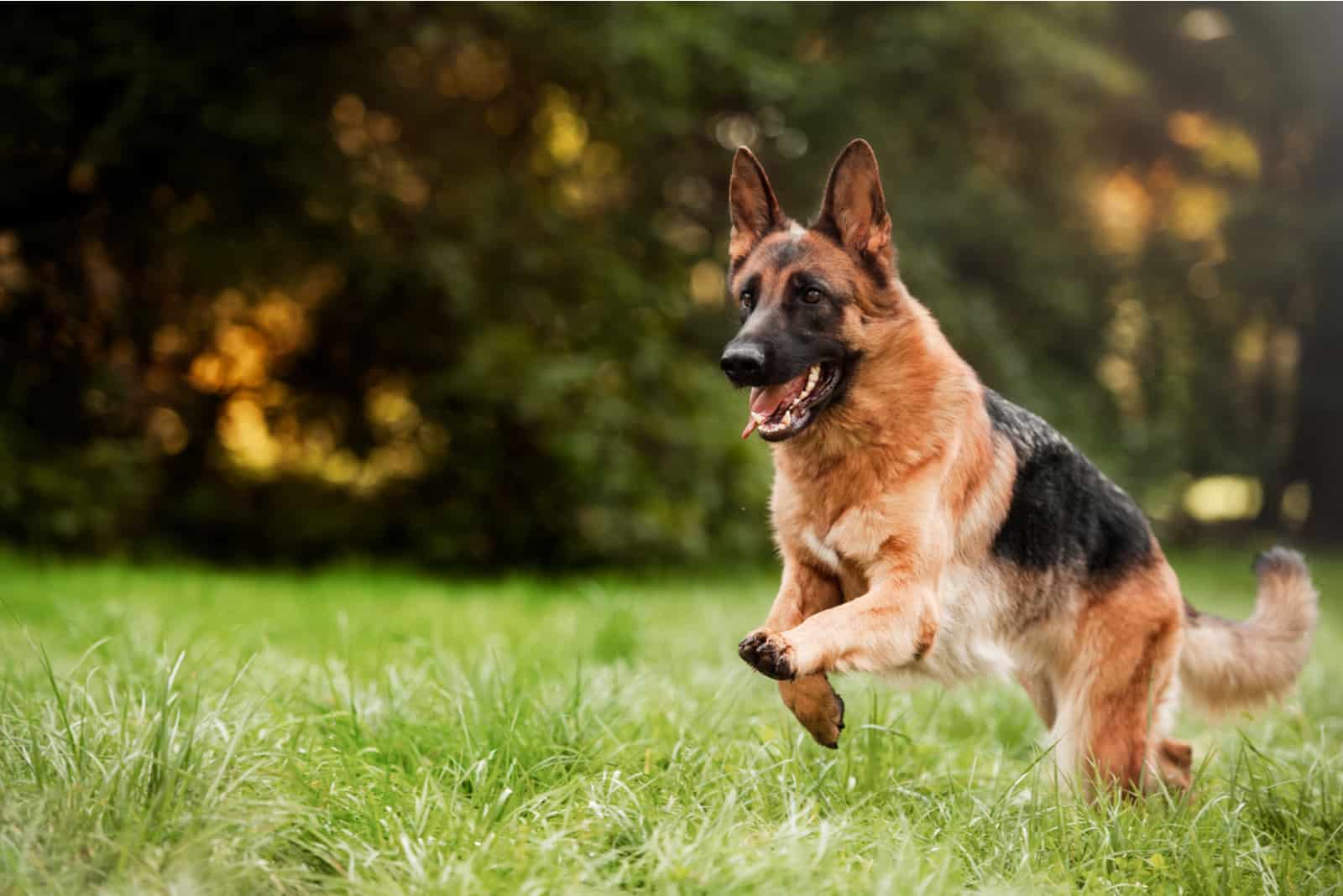Wag more, bark less — that would be the motto of our furry canine friends. And they do a lot of talking with their tails!
From a wag that says “let’s play!” to a tuck that screams “I’m scared!”, their tail can speak volumes about their mood. Ready to become a tail-position pro?
Let’s unleash the secrets of German Shepherd tail positions and learn what our beloved GSDs are trying to say!
5 German Shepherd Tail Positions And Their Meaning

What do German Shepherds tail positions mean? This is a very common question among paw lovers and especially future dog owners.
If you observe your dog’s tail, you will notice it moves side to side, up and down, left to right. Believe it or not, there is meaning to each tail movement, no matter if it is a German Shepherd, Siberian Husky, or a Pitbull dog.
Are you ready to find what each tail position means? So am I!
1. Wagging Tail
What does a German Shepherd tail do when he is happy?
Wag, wag, wag! Who doesn’t love a good tail wag from our furry friends?
Tail movements can tell us a lot about GSD’s emotions, and a wagging tail is no exception. But not all tail wags mean the same!
Fast Wagging
Fast-wagging tails are like the fireworks of the dog world — they signal excitement and happiness.
You might see a fast-wagging tail on a playful German Shepherd puppy at the dog park or a dog meeting its owner for the first time after a long day at work.
It is simply how they show affection and excitement for being there with their fellow humans!
Some GSDs are so hyper that they will jump all over the place, even on their owner and other animals! It is best to observe his body language to better understand his next move!
Slow Wagging
On the other hand, slow-wagging tails are like a gentle breeze on a summer day. They often indicate a relaxed and content German Shepherd dog.
You may notice the dog slow wagging the first time he meets someone! I like to call that the curious wag.
Slow wagging from side to side may also indicate that the dog is a bit anxious and insecure about his environment.
Tail Wagging Direction Matters
Did you know that the direction of the wag can also give us insight into a German Shepherd dog’s emotions?
Studies have shown that dog tail wags that are directed more to the right side show that they are feeling positive emotions, while those that are directed towards the left side show that they are feeling negative emotions.
So, the next time you see a wagging tail, take a look at which side it’s leaning toward and observe the GSD’s body language!
2. Straight Out And Stiff

When it comes to tails, some dogs like to wag and wiggle, while others prefer to hold their tail high and stiff like a good ol’ cavalry sword. But beware, a high straight, and stiff tail can be a sign of aggression!
The German Shepherd is one of tough pooch as it belongs to the large guard dog breed category. So, imagine such a big dog, standing tall with its tail held high, hackles raised and staring you down.
It’s like the dog is saying “I am the pack leader here, and you better watch out!”
And it’s not just big dogs that can do this, any small dog breed can raise its tail in this manner when feeling threatened or assertive.
It’s all about the tail end, you see. A high straight and stiff tail is a sign that the dog is feeling confident and dominant. And the longer the tail, the bigger the message they are trying to send.
So, next time you see a GSD with a high straight, and stiff tail, don’t try to show dominance (if it’s not your dog). It’s best to give them some space and respect their pack leader status.
3. Low-Hanging Tail
Oh boy, have you ever seen a dog with a low-hanging tail? It’s quite the sight!
These pups look like they’re ready to attack their owners at any moment with their tails wagging wildly, but don’t be fooled — they’re just happy to see you.
But beware, a German Shepherd with a low-hanging tail might be a different story. These majestic creatures are known for their powerful tails, and a low-hanger could mean they’re getting ready to unleash a dog bite of epic proportions.
So, if you see a GSD with a tail low, it’s best to proceed with caution.
All joking aside, a low-hanging tail in dogs can be a sign of various things, from being scared or anxious to being in pain.
4. Tucked Tail

Seeing GSDs with their tails tucked in between their hind legs feels like they’re trying to hide from the world, and it’s just what this tail position means — submissive behavior!
But, don’t let their shy tail fool you, these pups can get into some tail-chasing shenanigans when they’re feeling frisky.
So, a tail in a downward position can also be a sign that a dog is feeling scared, anxious, or submissive. A German Shepherd with a tucked tail might be more likely to whine or even nibble and growl when they feel scared.
Yes, these dogs can be scared of everything, and this happens more often than you think!
5. Curved Tail
Have you ever seen a dog with a tail that’s just a little bit curved? Of course, you have! It’s like they’re trying to send you a secret message with that slight curve, and it’s just too cute!
A relaxed German Shepherd dog with a slight curve in their tail is often a sign of contentment and happiness. They’re just chillin’ like a villain with their tail wagging away.
But, if the curve is too pronounced, it could be a sign of a health issue.
What Should A German Shepherd Tail Look Like?

A purebred German Shepherd’s tail should ideally look like a rigid, straight-as-a-board appendage that could double as a ruler or a calvary sword for show dogs.
But let’s be real, even the most high-end breeders can’t guarantee a tail that’s completely straight. In fact, some German Shepherds may have a slight curve in their tail, which is a-okay!
Not all dogs have the same tail length and some breeds like the GSD Samoyed mix, for example, may have a bushy tail that naturally curls.
It’s like they have their own little fluffy hula hoop attached to their hock joint, and it’s just too adorable!
GSDs are known for their straight tails. But, every once in a while, you might come across one with a curly tail and it’s like finding a needle in a haystack!
German Shepherd Tail Problems That Cause Different Positions

Okay, so we are all aware of how majestic GSD tails are. Well, there are several cases when they do not look so majestic.
Like all dogs, they can experience a variety of tail problems that can cause different tail positions. Let’s get into detail of some of the most common tail issues in the German Shepherd dog breed.
1. Anal Furunculosis
Rear-end woes got your German Shepherd down? Don’t worry, it’s not just you.
Anal Furunculosis, a pesky condition, can cause inflammation and abscesses around the anus. If you notice your pup constantly licks their hindquarters, it may be a sign of this chronic and painful condition.
2. Limber Tail Syndrome
Limber Tail Syndrome is a condition that causes the tail to become limp and floppy, often as a result of over-exertion or cold water exposure.
Dog owners often call this syndrome “limping tail syndrome” or cold tail which is also known as Acute Caudal Myopathy. But, this condition is not the same as the happy tail syndrome.
This causes the tail to become stiff and immobile, often as a result of exposure to cold temperatures.
4. Skin Infections
Lastly, skin infections can also affect the tail and cause a variety of symptoms, such as redness, itching, and discharge.
The same skin infections can cause your GSD to have crusty scabs on his back and around his mouth. Moreover, chronic infections may lead to a condition called stud tail.
The Final Wag

These doggos are like walking talking tail wagging machines! Don’t you agree?
Their tails can tell us a lot about their emotions, and it’s important to pay attention to them and the whole package, I mean, body language.
From wagging with excitement to tucking it between their legs in fear, a German Shepherd’s tail positions can tell you more than you can imagine!
So, next time you see a German Shepherd with a high straight, and stiff tail, remember, it’s not always a serious matter, sometimes it’s just a silly dog being silly.
But beware, if you see a wagging tail and the German shepherd is staring you down, it may be best to back away slowly, and give them some space, they might be feeling confident and dominant.
In short, GSD tails are like a secret code, and with a little practice and observation, you’ll be able to crack it in no time!















